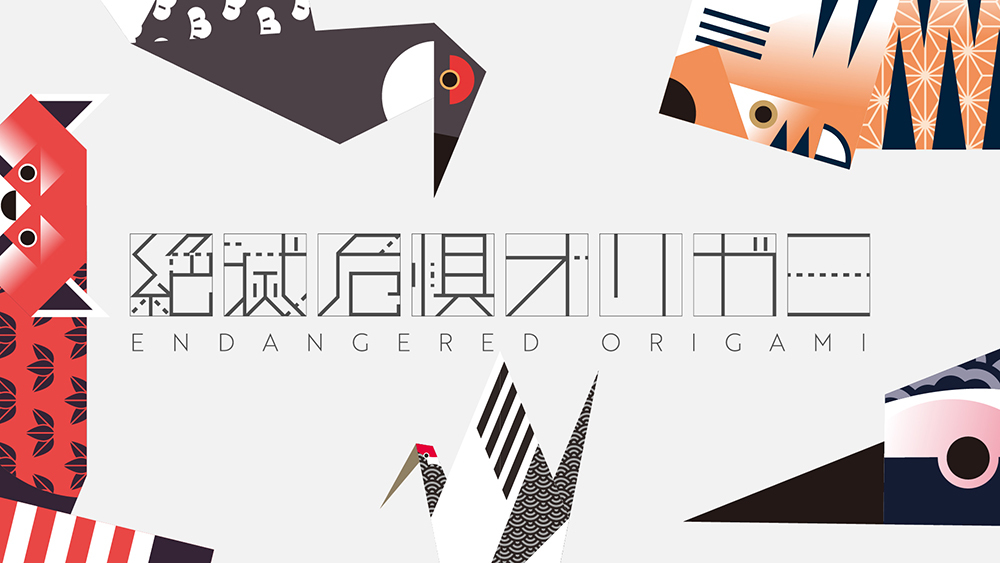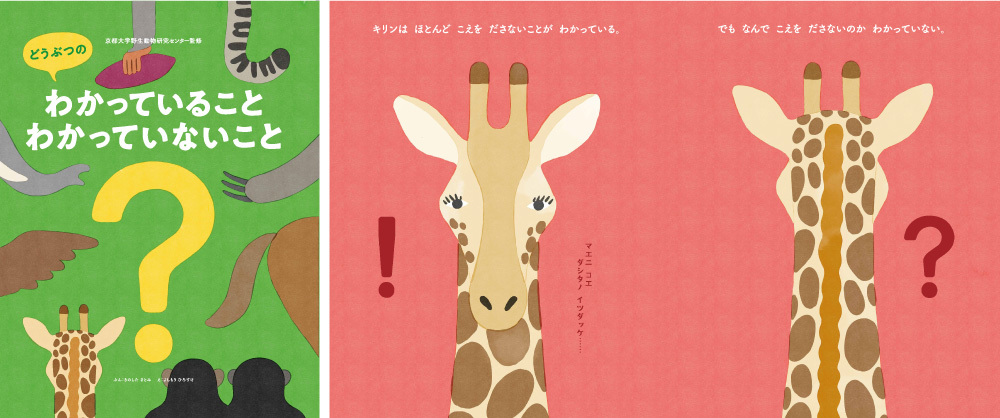"What's the state of creativity these days?" — If you want the answer, take a peek behind the scenes of the creative world. Every day, all sorts of things happen on the creative front lines. One such occurrence is the formation of creative units and volunteer teams. Right now within Dentsu Inc., units and teams are emerging one after another, each clearly stating their ambitions and creative skills. What concerns them, and what are they aiming for? Understanding this is also about contemplating the future of creativity.
Part 2 features the Planning & Creative Unit "DENTSU Ecosystem LAB."
Let's listen closely to their voices.
[Unit Profile]
DENTSU Ecosystem LAB
DENTSU Ecosystem LAB is a planning & creative unit that leverages the expertise and networks of members who have conducted endangered species conservation activities and collaborative projects with zoos and aquariums. It creates communications rooted in ecosystem conservation, environmental challenges, and the SDGs.

Lab Members: From left, Satomi Kinoshita, Nobuaki Hattori, Taisuke Yoshimori
The impetus was a desire to support the "wildlife researchers" close to us
──First, could you tell us what purpose "DENTSU Ecosystem LAB" serves?
Kinoshita: Yes. As the name suggests, it's a lab centered around the core theme of "ecosystems," but we don't directly engage in activities like "wildlife protection" or "conservation of endangered species." The core players in those activities are conservation organizations, zoos and aquariums, and wildlife researchers. We work as copywriters and art directors in our day jobs, so our motivation is to use our creative power to help convey the efforts of those involved in ecosystem conservation to the wider world.
──What sparked that idea?
Kinoshita: I have a twin sister who is a researcher studying snow leopards and various endangered species. Once, while she was observing snow leopards at a zoo, a visitor saw them and said, "Oh, it's a cheetah." My sister was frustrated that research alone couldn't effectively communicate the plight of endangered species. So, together with a senior colleague from the same department at the time, we created "The Snow Leopard Song." This song became the catalyst for visiting habitats and developing activities that connect zoos and everyday people. Before we knew it, we had accumulated knowledge about conservation efforts and expanded our network. Still, since it was purely a private initiative, I thought it would be difficult to connect it to my work at Dentsu Inc.
Yoshimori: My daughter is a huge animal lover. When she heard your sister was a wildlife researcher, she became interested. Listening to researchers, I learned that wildlife research, being fundamental research, differs from applied research where results are easily visible. It's hard to grasp its significance, and securing research funding is tough. Ms. Kinoshita's sister works at Kyoto University's Wildlife Research Center (WRC), one of Japan's few research institutions specializing in wildlife. Yet even this center remains largely unknown to the general public. That's when I thought it would be great to have a logo researchers would want to use when presenting at conferences or other events. I took the initiative to propose this and started designing elements like their website and newsletters. At the time, I was doing it all as a volunteer. I vaguely hoped that improving the design might attract more people and eventually lead to industry-academia collaboration.

Kyoto University Wildlife Research Center Logo and Newsletter
Hattori: I'm now in a different department, but when the lab was established, I was in the same 1CR Planning Bureau as the two of them. I myself had no connection or background in wildlife (laughs). I just happened to learn about their activities and thought it would be a waste to keep this as a personal project. SDGs and biodiversity had become critical fields, and being connected to a research institution like WRC within that context was a tremendous resource. If you possess deep insight or real-world experience on a specific topic, Dentsu Inc.'s strength lies in being able to build teams around it. Since I'd been with the company longer than the two of you, I felt guiding that process was my role. So I formally proposed establishing the lab, suggesting we deepen our activities with that awareness and responsibility.
By focusing attention not on "what we know" but on "what we don't know," I wanted to shine a light on the research activities themselves.
──Among recent initiatives and outcomes, publishing a picture book stands out as a representative activity, right?
Kinoshita: Yes. To widely convey the appeal of wildlife research, I felt we needed to create something that would appeal even to people not interested in research. I thought a book might achieve that, so I approached two people and started planning.
Yoshimori: There are so many animal trivia books out there, so I wanted ours to stand out. While trivia is fun, I realized that showcasing "what we still don't know" could really convey the excitement of research. That's how we developed the concept for "What We Know and Don't Know About Animals."
Hattori: As we fleshed out the concept, we also saw many connections to "inquiry-based learning," something Shogakukan highly values. Inquiring minds ask "why" and "how" about various things and have the drive to investigate for themselves. With support from the Publishing Business Production Bureau, we got the chance to pitch this idea directly to Shogakukan (the publisher is Shogakukan Shueisha Productions), who are actively promoting this approach. There, our visions aligned, and suddenly, publication became a reality.
(Read the full discussion on creating the picture book here )
"Essence" and "Relevance" are the keywords. We want readers to feel the challenges of ecosystem conservation firsthand, not just follow trends.
──Finally, please tell us about your future activities.
Kinoshita: Following climate change, we're hearing the term "biodiversity" more often. From a business perspective, it's about how to monetize this and drive the economy. But for us, we want to focus on something a bit more fundamental. Endangered species are in the news, but what exactly is "extinction"? To put it bluntly—is extinction truly a bad thing? The environment changes daily; perhaps extinction is natural selection. Of course, some extinctions are unacceptable. Researchers observe calmly, sometimes questioning, "Is preserving this ecosystem truly the right approach?" We also want to provide people with opportunities to pause and reflect, grasping the essence of the issue rather than being swayed by passing trends. We believe this ultimately leads to a better understanding of research and proper ecosystem conservation.
Yoshimori: While the environment is being destroyed and many species are lost, keeping pets has become a huge trend. Even with animals close to us, there's so much we don't understand. Confronting major environmental issues is essential, but I also want us to focus just as much on things closer to home. In our daily lives, nature and ecosystems tend to feel disconnected. Keywords like SDGs are everywhere, but when it comes to things we tangibly feel in our daily lives, it feels a bit lacking. As an art director, I want to use the power of design to spark interest in more people. I believe this could eventually become a small step that moves the world.
Kinoshita: We're gradually building a portfolio and receiving more inquiries. We also get requests to connect people with researchers or zoos. That said, our core expertise is creative work, so we want to go beyond just making connections—we want to contribute our strength in planning and production, deciding what to communicate and how. Recently, we were approached by Dentsu Digital Inc. and implemented the "Endangered Origami" project. We look forward to collaborating with many more people going forward. If you have any wildlife-related projects, we'd be delighted to discuss them with you.

Endangered Origami:
Origami is something everyone knows. But the motifs used are now mostly endangered species. This project uses AR technology to expand origami, conveying this reality in a tangible way.
Website URL:
https://endangered-origami.com/
[From the Editorial Team]
Conserving endangered species, protecting wildlife—DENTSU Ecosystem LAB tackles these global challenges through communication. Yet their inspiration came from very personal sources: helping my sister, a researcher, and the influence of my animal-loving daughter. While unexpected, this personal connection allows them to convey the core issues in a way that makes everyone feel personally invested—interesting and easy to understand. We look forward to seeing what ideas and creative skills they will next present to us, shaped by their awareness of ecosystem issues.














